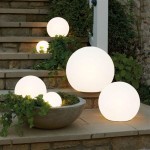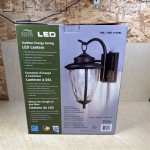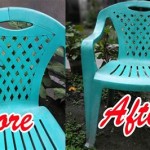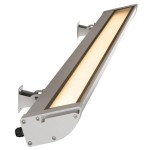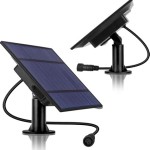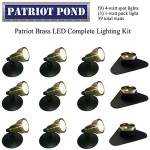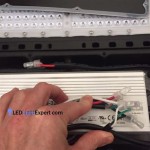How to Hang Outdoor Lights on Your Patio
Enhancing the ambiance of an outdoor patio with string lights can transform the space into an inviting and visually appealing area. The process, however, requires careful planning and execution to ensure safety, aesthetic appeal, and structural integrity. This article provides a comprehensive guide on how to hang outdoor lights on a patio, covering various methods, materials, and safety considerations.
Planning and Preparation: Key Considerations Before Installation
Before commencing the physical installation of outdoor lights, a detailed plan is crucial. This involves assessing the patio's layout, determining the desired lighting pattern, and selecting appropriate materials and equipment. This initial phase dictates the overall success and longevity of the installation.
The first step involves evaluating the patio space. Consider the size of the patio, the presence of existing structures like pergolas or fences, and the desired area to be illuminated. A scaled drawing or sketch can be helpful in visualizing the final outcome and calculating the necessary length of string lights. Note any potential obstructions, such as trees, shrubs, or furniture, that may interfere with the lighting arrangement.
Next, define the desired lighting pattern. Common patterns include straight lines, zigzags, loops, and draped arrangements. The choice depends on the aesthetic preference and the architectural features of the patio. Consider the spacing between individual lights on the string, as this affects the overall brightness and ambiance. Closer spacing creates a brighter, more concentrated light, while wider spacing provides a softer, more diffused glow.
Selecting appropriate outdoor string lights is critical for both aesthetics and safety. Opt for lights specifically designed for outdoor use, as they are typically weather-resistant and constructed with durable materials. Look for UL-listed or ETL-certified lights, indicating that they have been tested and meet established safety standards. Consider the type of bulb: LED bulbs are energy-efficient and have a longer lifespan compared to incandescent bulbs. Choose a bulb color temperature that complements the patio's décor and creates the desired mood. Warm white light (2700-3000K) is generally preferred for creating a cozy and inviting atmosphere.
Finally, gather all necessary materials and tools before starting the installation. The required materials may include string lights, support wires or cables, hooks or clips, zip ties, electrical tape, and a power source (outdoor outlet or extension cord). Essential tools include a ladder, measuring tape, drill (if needed for installing hooks), pliers, and wire cutters. Ensuring all materials and tools are readily available streamlines the installation process and minimizes potential delays.
Installation Methods: Selecting the Right Approach for Your Patio
The method used to hang outdoor lights depends on the patio's construction and the availability of support structures. Several options exist, each with its own advantages and limitations. Choosing the right installation method is essential for ensuring the lights are securely and aesthetically displayed.
If the patio has a pergola or gazebo, these structures provide excellent support for hanging string lights. The lights can be draped along the beams or wrapped around the posts. Use hooks or clips to secure the lights to the structure, ensuring they are evenly spaced and taut. Avoid using nails or screws directly into the wood, as this can damage the structure and create potential safety hazards. Consider using screw-in hooks or adhesive clips that are designed for outdoor use. For a more elegant look, the string lights can be concealed behind the beams, providing indirect lighting.
For patios with fences, the fence posts offer a convenient way to support string lights. Similar to pergola installations, hooks or clips can be used to attach the lights to the posts. Run a support wire or cable between the posts to provide additional support for the lights, especially if the distance between the posts is significant. The support wire should be strong enough to bear the weight of the lights and prevent them from sagging. Turnbuckles can be used to tighten the support wire and ensure it remains taut. Consider the height of the fence when planning the lighting arrangement; lower lights create a more intimate atmosphere, while higher lights provide broader illumination.
When lacking existing structures, creating support points using poles is a viable option. Metal or wooden poles can be strategically placed around the patio to serve as anchors for the string lights. The poles should be sturdy and tall enough to provide adequate clearance for foot traffic. Secure the poles in the ground using concrete or anchoring systems. Attach hooks or clips to the poles at the desired height and run support wires between the poles. This method allows for greater flexibility in creating custom lighting arrangements and defining specific areas of the patio.
Another method involves hanging the lights from trees surrounding the patio. This approach can create a natural and whimsical ambiance. However, caution must be exercised to avoid damaging the trees. Use tree-friendly hooks or clips that do not penetrate the bark. Avoid wrapping the lights tightly around the branches, as this can restrict growth and cause stress to the tree. Regularly inspect the lights and attachments to ensure they are not causing any harm to the tree. Consider the weight of the lights and the strength of the branches; avoid hanging excessively heavy lights on weak or unstable branches.
Safety Precautions: Ensuring a Safe and Durable Installation
Safety is paramount when installing outdoor lights. Improper installation can lead to electrical hazards, fire risks, and structural damage. Adhering to safety guidelines is essential for protecting people and property.
Always disconnect the power source before working with electrical components. Ensure the string lights are turned off and unplugged from the outlet. Use a non-contact voltage tester to verify that the power is indeed off. Avoid working in wet or damp conditions, as this increases the risk of electric shock. Wear appropriate safety gear, such as rubber gloves and safety glasses, to protect against potential hazards.
Select outdoor-rated extension cords if needed. These cords are designed to withstand the elements and are less likely to short-circuit or overheat. Avoid using indoor extension cords outdoors, as they are not designed for such conditions. Ensure the extension cord is properly grounded and has a sufficient amperage rating to handle the combined load of the string lights. Do not overload the circuit by plugging too many lights into a single outlet. Consider using a surge protector to protect the lights from power surges.
Properly secure all connections to prevent them from coming loose. Use electrical tape to insulate any exposed wires or connections. Ensure the tape is weather-resistant and designed for outdoor use. Avoid leaving wires dangling or touching the ground, as this can create a tripping hazard and increase the risk of damage. Use zip ties or cable clamps to neatly organize and secure the wires. Regularly inspect the connections for signs of wear or damage and repair or replace them as needed.
Avoid hanging lights near flammable materials, such as dry leaves, wood piles, or propane tanks. Maintain a safe distance between the lights and any potential fire hazards. Ensure the lights are not obstructed by curtains, awnings, or other materials that could potentially ignite. Regularly clear the area around the lights of any debris that could pose a fire risk. Consider using fire-resistant string lights or bulbs for added safety.
Pay attention to the weight capacity of the support structures. Avoid overloading pergolas, fences, or trees with excessively heavy lights. Distribute the weight evenly to prevent sagging or structural damage. Use multiple support points to distribute the load and reduce stress on individual structures. Regularly inspect the support structures for signs of wear or damage and repair or reinforce them as needed. Consider consulting with a structural engineer if unsure about the weight capacity of a particular structure.
Finally, follow all local electrical codes and regulations. Some municipalities may have specific requirements for outdoor lighting installations. Obtain any necessary permits before starting the project. If unsure about the electrical codes in the area, consult with a qualified electrician. Adhering to local regulations ensures the installation is safe and compliant with established standards.
By carefully planning the installation, selecting appropriate materials, and adhering to safety precautions, enhancing a patio with outdoor lights can create a beautiful and inviting outdoor space.

How To Hang Patio Lights

28 Backyard Lighting Ideas How To Hang Outdoor String Lights

How To Hang Outdoor String Lights And Make Them Look Good Wirecutter

How To Hang String Lights Outdoors

How To Hang Patio Lights

How To Hang Outdoor String Lights And Make Them Look Good Wirecutter

How To Hang Outdoor String Lights Flip The Switch

How To Hang Outdoor String Lights Step By Guide

How To Hang Patio Lights

How To Hang Patio Lights Etc Hanging Backyard Lighting
Related Posts
